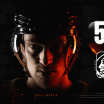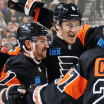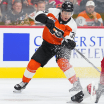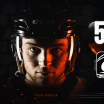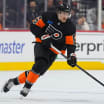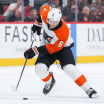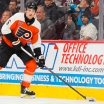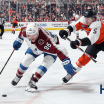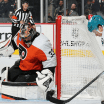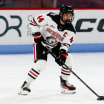4) Second period shots on goal were 16-5 in Vancouver's favor. In terms of shot attempts, Vancouver had all-situation 58.33 Corsi and 67.87% Fenwick in terms of the unblocked shot attempt differential. Vancouver doubled up the Flyers in overall scoring chances (14-7) and had a 7-1 edge in terms of high-danger chances. It's hardly going out on a limb to say that Jones was the best player on the ice for Philadelphia in this period.
5) The Flyers were unable to get much going on an early third period power play.Vancouver got more pressure on its own early power play (a marginal holding call against Oskar Lindblom) but Philly shut down the latter part of the Canucks' 5-on-4. With the play back to full strength, Ivan Provorov came up with a key shot block to erase a dangerous chance and then recovered the puck.
At 9:34, van Riemsdyk got his feet tangled with Oliver Ekman-Larsson and was called on a tripping penalty. However, it was a short-lived power play for the Canucks as Elias Pettersson took a holding penalty after Couturier controlled the puck in the neutral zone. Vancouver controlled the ensuing 4-on-4 but they were denied by Jones. With the Flyers on a brief power play, Halak made a tough save on Konecny.
Joel Farabee was not quite able to finish off a 2-on-1 chance with a little over three minutes left. The Canucks got a 6-on-4 power play (with Halak pulled for an extra attacker) with 1:20 left on the clock when Provorov was called for tripping. Philly did a good job at preventing the Canucks from getting set up. Jones took care of what got to him and then Travis Sanheim came up with a vital puck clear down the ice.
Third period shots were 8-8. The respective team Corsi splits were an even 50-50. Vancouver had a slight (5-4) scoring chance edge and a 3-1 high-danger chance advantage. Overall, the final frame was rather evenly played.



